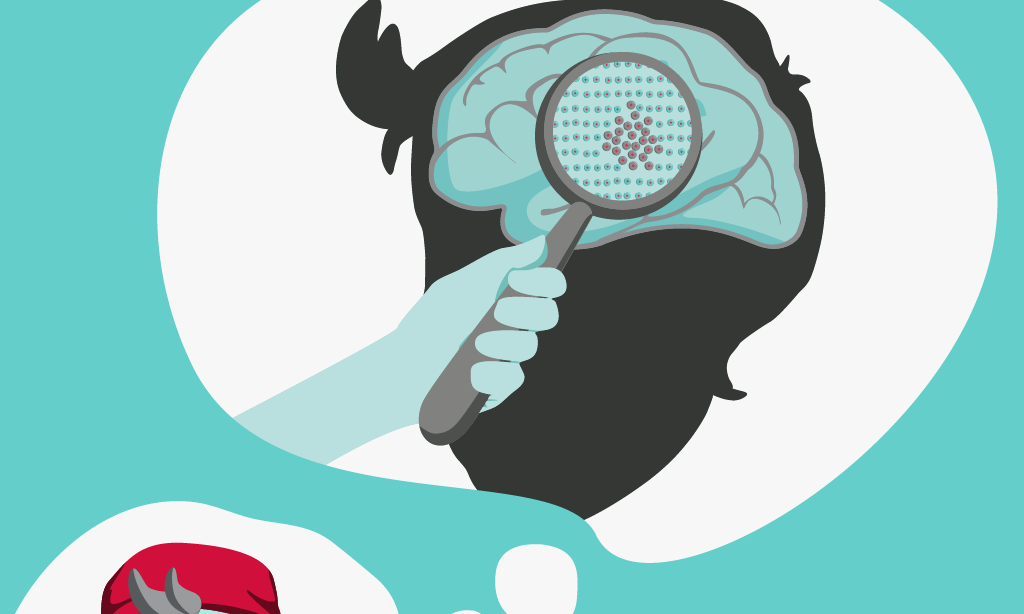Medulloblastoma
Medulloblastoma is the most common high grade childhood brain tumour, accounting for 15-20% of all childhood brain tumours. It is also the second most common children’s tumour type overall.
On this page, we’ll cover:
- What is a medulloblastoma?
- Medulloblastoma symptoms
- Medulloblastoma treatment
- What causes medulloblastomas?
- How long can someone live with a medulloblastoma?
Get support
If your child or a child you know has recently been diagnosed with a brain tumour you may be worried about what this means. Although this a perfectly natural way to feel, this does not make the feeling any easier.
Our Support team can help answer any questions you have, lend a listening ear and find information for you. They are able to provide ongoing support, but please be aware that they’re not medical professionals.
What is a medulloblastoma?
Medulloblastoma is the most common central nervous system (CNS) embryonal tumour. About 15-20% of all childhood brain tumours are medulloblastomas.
They are:
- fast growing
- likely to spread to other areas of the brain or spinal cord.
These tumours usually develop in a part of the brain called the posterior fossa, which is located near the back of the skull. These tumours are most commonly found in the cerebellum, an area of the posterior fossa that controls coordination and balance.
They are commonly found in children between the ages of 3 and 8, with a higher occurrence in males.
Medulloblastoma groups
In the past few years, research has significantly advanced our understanding of medulloblastomas and we’re now able to put them into 4 main groups based on demographic, clinical and genetic differences.
-
This is the best known subgroup of all the medulloblastomas and has been identified in 10-15% of patients. The average age of occurrence is 10 years old and it is more commonly found in females.
These tumours often occupy the fourth ventricle; the fluid filled space in the middle of the posterior fossa.
-
This type of medulloblastoma frequently occurs in both infants (under three) and adults (over 16), but are less frequent in children aged three to sixteen.
SHH medulloblastoma is commonly associated with a condition known as Gorlin syndrome, due to a gene mutation that causes the over-activation of cells, leading to the formation of a tumour.
Why is it called Sonic Hedgehog medulloblastoma? Sonic hedgehog was identified as a gene in the hedgehog family of genes (so named because they give the cell a “spiky” appearance). Other family members were named after different species of hedgehogs. But, with this one, the discoverer decided to name after a character from a comic book that his daughter was reading (as the comic actually predates the game).
-
This type of medulloblastoma occurs more commonly in males than females, and are most common in young children ranging from one to ten years old.
At diagnosis, these are often metastatic (already spread to other parts of the brain and spinal cord). Similar to the WNT medulloblastomas, the tumour is generally located within the fourth ventricle.
-
This is the most common subgroup of medulloblastoma, making up around 35-40% of all cases. These tumours can occur in all ages but are most prevalent in mid-childhood.
The genetic test to determine the type of medulloblastoma that your child may have is now available on the NHS.
This test will also help your medical team to tell you if your child could sign up to be part of clinical trials.
There has recently been a study called PNET5, which is awaiting results. You can read more about it here.
And, to find out more about clinical trials, click the link below.
Medulloblastoma symptoms
Medulloblastoma symptoms could include any of the child brain tumour symptoms, including:
- headaches that come on quickly, especially in the morning
- nausea and/or vomiting
- feeling extremely tired
- loss of balance and co-ordination which may lead to difficulty walking
- abnormal eye movements
- blurry vision caused by swelling of the optic disc at the back of the eye (papilloedema).
Medulloblastoma can also cause increased pressure in the skull. This is because of the location of this type of tumour.
In some cases, the tumour can spread to the spinal cord, causing another set of symptoms, such as back pain, an inability to control the bowels and bladder and difficulty walking.

The best feeling was when my treatment finished, the Hickmann line was taken out and I had a real proper bath with bubbles.
Lucy Bennet

Lucy Bennet, diagnosed with a medulloblastoma in 1998, aged 3
“I was only three when I was diagnosed on holiday with my family in France.
“Once home I had surgery, radiotherapy, and a Hickmann line was put in to give me chemotherapy. But this couldn’t get wet.
“So finishing treatment and being able to have a bubble bath stood out for me, even more than presents from Santa.
“I now take growth hormone every day and vitamin D3, as the radiotherapy left me with low bone density. I sometimes take a little longer to understand information – but this hasn’t stopped me from passing my GCSEs, A-levels and going to Canterbury University to do a degree in Early Childhood Studies.
“More recently, I’ve had seizures and times when my writing hand freezes, making me struggle with my confidence and self-esteem.
“But even more recently, I joined a closed support group on Facebook and went to charity events for young adults affected by a brain tumour.
“I used to feel nervous when meeting groups of people I didn’t know, but not anymore. My life has changed for the better.
Join one of our Online Support Communities for more stories and tips about coping with a brain tumour diagnosis from people who know what you’re going through.
Medulloblastoma treatment
Treatment for medulloblastoma could include a combination of surgery, radiotherapy and chemotherapy.
The first course of treatment is usually neurosurgery to remove the tumour. However, if your child’s tumour has caused a build-up of cerebrospinal fluid (CSF), the surgeon may first need to perform an operation to reduce the pressure.
Following surgery, radiotherapy is often used to destroy any remaining tumour cells. It is normally given to the whole brain and spinal cord as medulloblastomas can travel through the CSF to the spinal cord.
If a child is aged under 3, whole brain radiotherapy is usually avoided and high-dose chemotherapy may be used to delay or eliminate the need for radiotherapy.
In some cases, children older than 3 may be given several cycles of high-dose chemotherapy before or after radiotherapy.

Join our online community
Our online support group for parents is a great place to connect with other parents affected by a brain tumour and share your experiences.
What causes medulloblastomas?
It’s important to understand that nothing you’ve done or could have avoided doing would have prevented a brain tumour from developing.
As with all brain tumours, we don’t know for sure what causes medullblastomas to start growing. But, we do understand some of the risk factors involved.
SHH medulloblastomas in particular are commonly associated with a condition known as Gorlin syndrome. This is a gene mutation that causes the over-activation of cells, leading to the formation of a tumour.
Can medulloblastoma be cured?
There is no way to know for certain how you or your child will respond to treatment. You can be given average survival rates, but everybody is different and it will depend on so many factors. Response to treatment will depend on the tumour grade, size and location, but also general health and individual body chemistry.
Support and Information Services
Research & Clinical Trials Information
You can also join our active online community.
In this section

Get support
If you need someone to talk to or advice on where to get help, our Support and Information team is available by phone, email or live-chat.
Recommended reading
Get your free Brainy Bag
Our Brainy Bag is a free gift for children and young people who have been diagnosed with a brain tumour, made up of a range of handpicked toys and activities!
Share your experiences and help create change
By taking part in our Improving Brain Tumour Care surveys and sharing your experiences, you can help us improve treatment and care for everyone affected by a brain tumour.

